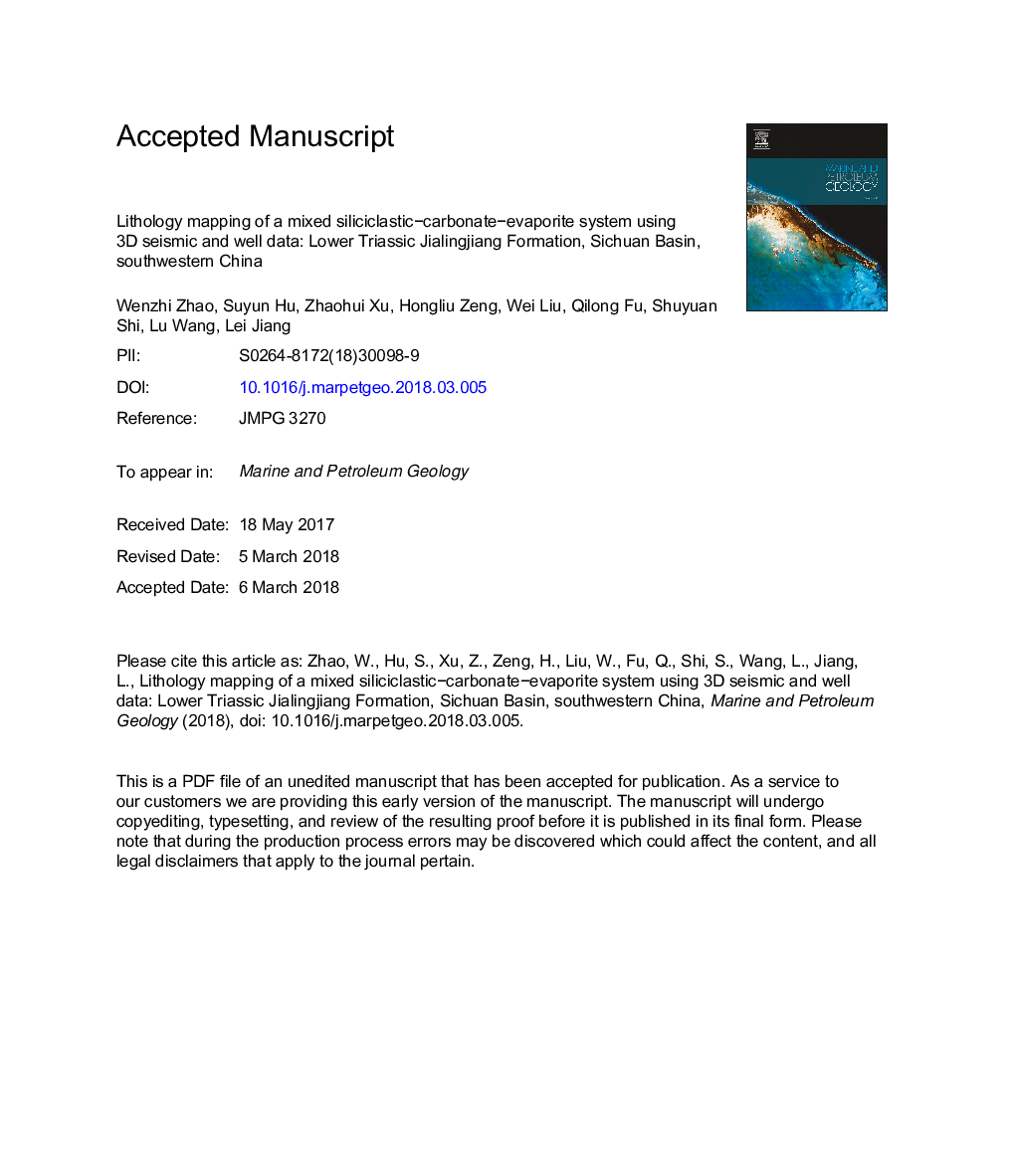| کد مقاله | کد نشریه | سال انتشار | مقاله انگلیسی | نسخه تمام متن |
|---|---|---|---|---|
| 8909114 | 1637132 | 2018 | 27 صفحه PDF | دانلود رایگان |
عنوان انگلیسی مقاله ISI
Lithology mapping of a mixed siliciclasticâcarbonateâevaporite system using 3D seismic and well data: Lower Triassic Jialingjiang Formation, Sichuan Basin, southwestern China
دانلود مقاله + سفارش ترجمه
دانلود مقاله ISI انگلیسی
رایگان برای ایرانیان
کلمات کلیدی
موضوعات مرتبط
مهندسی و علوم پایه
علوم زمین و سیارات
زمین شناسی اقتصادی
پیش نمایش صفحه اول مقاله

چکیده انگلیسی
High-quality three-dimensional (3D) seismic data acquired in the central Sichuan Basin, southwestern China, offer an opportunity to map complex lithologies in a mixed siliciclastic-carbonate-evaporite system in the Lower Triassic Jialingjiang (T1j) Formation. The formation consists of siliciclastics, limestone, dolostone, anhydrite, and salt. The lithologies consist several source-reservoir-cap assemblages in the area. Lithologies in the T1j Formation change rapidly in the vertical direction, forming different interbed patterns in thin layers. In the mean time, the lateral extend of each lithology is complex. This vertical and lateral distribution makes it difficult to predict lithology by single seismic attribute. Therefore, principle component analysis (PCA) was applied to tens of seismic attributes to extract useful information. The first three components contain most (83.02-99.85%) of the lithology information preserved in seismic attributes, which were used to correlate with lithology content calculated by core-calibrated wireline logs. Correlation coefficients of the three seismic components with lithologies are significantly higher (0.37-0.79) than those of individual seismic attributes (near zero to 0.58). Different assemblies of end-member lithologies were selected from anhydrite, siliciclastics, tight dolostone, limestone, and salt to perform PCA in different sequences. Lithologic content distribution of individual end members was shown by color-blending method to map the lithology mixture. Sedimentary history in the T1j Formation was reconstructed based on lithology-mixture maps and regional geology background in the study area. Eight 4th-order sequences were interpreted in the T1j Formation. Only the second sequence was influenced by siliciclastic input, forming a complete mixed siliciclastic-carbonate-evaporite system. Open platform and/or restricted evaporative environment dominated the other seven sequences, forming a mixed carbonate-evaporite system.
ناشر
Database: Elsevier - ScienceDirect (ساینس دایرکت)
Journal: Marine and Petroleum Geology - Volume 93, May 2018, Pages 422-436
Journal: Marine and Petroleum Geology - Volume 93, May 2018, Pages 422-436
نویسندگان
Wenzhi Zhao, Suyun Hu, Zhaohui Xu, Hongliu Zeng, Wei Liu, Qilong Fu, Shuyuan Shi, Lu Wang, Lei Jiang,